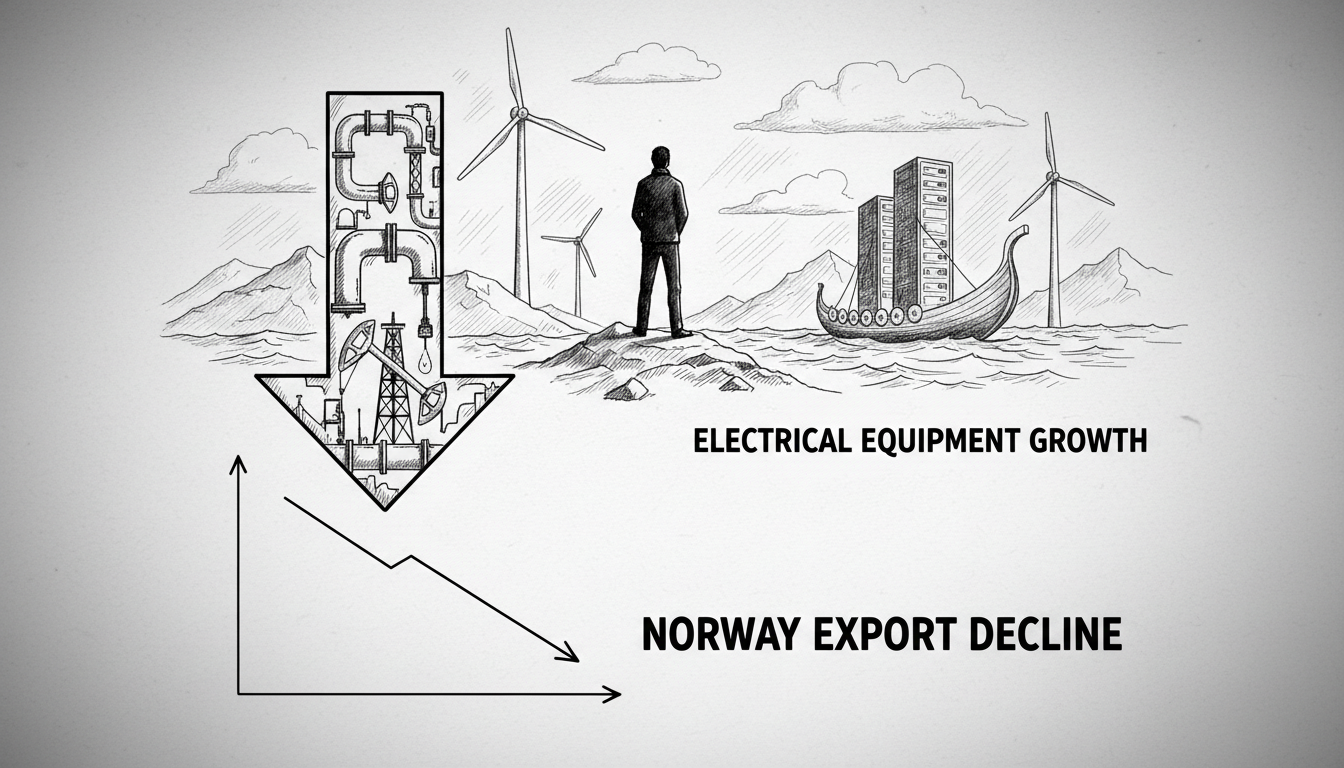Norway recorded a notable drop in export revenue during October despite mainland goods showing strong performance. The country exported goods worth 154.5 billion kroner, representing a 3.9 percent decrease compared to the same period last year. Lower oil and gas prices drove this decline even as mainland exports surged.
Senior advisor Jan Olav Rørhus explained the situation in an official statement. Lower natural gas revenues primarily caused the total export decrease, he said. Reduced imports helped maintain a trade surplus nearly unchanged from last October.
October's import figures reached 98 billion kroner, down 5.8 percent year-over-year. This resulted in a trade surplus of 56.5 billion kroner, slightly below last October's level. The Norwegian krone's 3.2 percent appreciation during October contributed to lower export industry revenues while making imported goods cheaper.
Natural gas exports fell dramatically to 42.4 billion kroner, a 23.8 percent decrease from October last year. Both lower prices and reduced export volumes drove this decline. Gas prices dropped compared to both last October and summer levels due to abundant market supply, high storage levels, and above-normal temperatures.
Crude oil exports reached 37.4 billion kroner despite a 17.6 percent volume increase. Export value fell 5.2 percent because oil prices were nearly 20 percent lower than October last year.
Mainland exports told a different story, climbing to 74.5 billion kroner. This represented growth exceeding 14 percent compared to last October. Electrical power machinery and parts exports drove much of this increase, rising by nearly 8 billion kroner.
Norwegian supplier industry secured major contracts for electrical equipment to offshore wind projects abroad, Rørhus noted. This provided significant momentum behind mainland export growth in October.
Not all sectors performed well. Refined mineral oil products exports dropped sharply to 3.1 billion kroner, down 48 percent from last year. Fish exports also declined slightly to 18 billion kroner, falling 1.4 percent.
The numbers reveal Norway's ongoing economic transition. The country continues reducing its dependence on traditional energy exports while building new industrial strengths. Offshore wind equipment manufacturing represents one promising growth area as global renewable energy investment increases.
International businesses and investors should note these shifting patterns. Norway's export composition is changing substantially, creating new opportunities beyond the energy sector. The krone's fluctuations also create both challenges and advantages for different parts of the economy.

